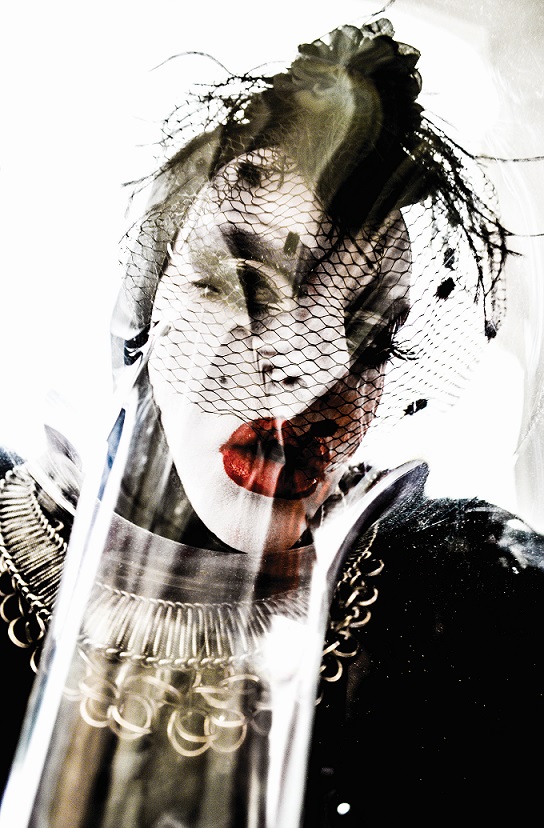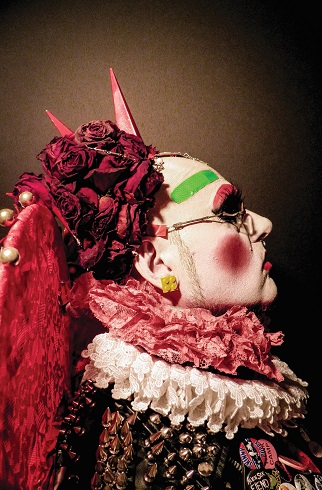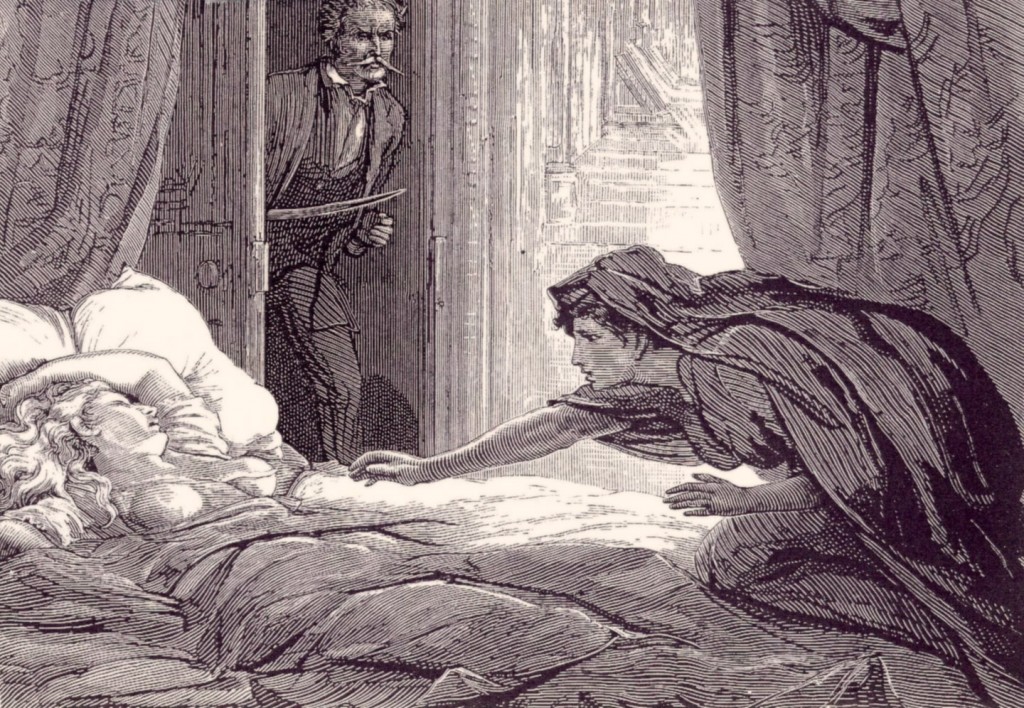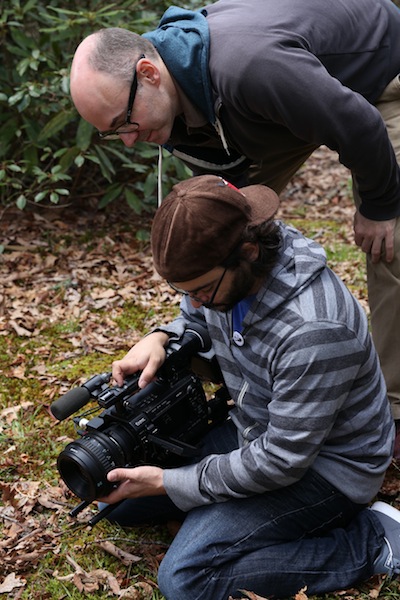 A HARD DAY’S NIGHT (1964); Dir. Richard Lester; Starring The Beatles (John Lennon, Paul McCartney, George Harrison and Ringo Starr); Runs Friday, July 4 – Thursday, July 10 (see Plaza Theatre website for times and ticket prices); Plaza Theatre; Trailer here.
A HARD DAY’S NIGHT (1964); Dir. Richard Lester; Starring The Beatles (John Lennon, Paul McCartney, George Harrison and Ringo Starr); Runs Friday, July 4 – Thursday, July 10 (see Plaza Theatre website for times and ticket prices); Plaza Theatre; Trailer here.
By Aleck Bennett
Contributing Writer
Has it been 50 years already? Hard to tell when it comes to something timeless, and there are few films as timeless as The Beatles’ motion picture debut, A HARD DAY’S NIGHT. Chock full of great music, wild comedy, groundbreaking direction and a witty, snappy script, it’s enjoyable enough on any occasion. But with a beautiful, newly-minted restoration, there’s no better way to commemorate the movie’s half-centenary than spending an evening at the Plaza Theatre with the “Fab Four”.
When it comes to rock & roll movies, there are generally three camps. There are straight-up documentaries and concert films, like The Band’s THE LAST WALTZ, ELVIS: THAT’S THE WAY IT IS, WOODSTOCK or Dylan’s DON’T LOOK BACK. Then there are the films where a rock star gets shunted into some generally cockamamie scenario which has musical performances conveniently hanging off of it, such as most Elvis movies or Herman’s Hermits’ MRS. BROWN YOU’VE GOT A LOVELY DAUGHTER. Then there are those films where you’ve got a plot and actors that serve chiefly to prop up a handful of showcase musical numbers, featuring musicians that you don’t really see outside of those isolated performances, aside from maybe five minutes of acting to establish their presence in the film. This is typical of most 1950s rock & roll movies (Elvis vehicles excluded) like THE GIRL CAN’T HELP IT, ROCK AROUND THE CLOCK and—in later years—the Ramones’ tribute to these flicks, ROCK ‘N’ ROLL HIGH SCHOOL.
Then, there are the exceptions, and A HARD DAY’S NIGHT is one of the most striking. It’s not a documentary, though it probably gets closer to the true spirit of The Beatles and Beatlemania than any documentary could. It’s not tied up in some convoluted plot that exists to just fill time between songs (that would be their follow-up movie, the winkingly self-conscious HELP!). And with The Beatles starring as themselves, it breaks away from the ‘50s template. At the time, it was truly revolutionary. There really wasn’t much else like it.
And it remains the single gr eatest rock and roll movie ever made.
eatest rock and roll movie ever made.
Like Joe Bob Briggs used to say, it doesn’t have any plot to get in the way of the story. The Beatles have to make it to a TV studio for a live broadcast, putting up with Paul’s troublemaking grandfather (“He’s very clean.”) and the trappings of superstardom along the way. That’s it. But that threadbare plot allows plenty of time for the lads’ personalities to shine through and firmly establish each of them as distinct characters. It also allows ample opportunity to present The Beatles’ music organically: not only as score, but as source—in staged rehearsals and run-throughs leading up to their on-air performance.
The script is incredibly clever, providing constant tangential episodes within the film that deliver small moments of energy, so we never hit a dead spell in the journey. As a result, it plays as something of a sketch film, with the consistent forward dynamic of the band’s race to the TV studio maintaining an overarching momentum. In addition, screenwriter Alun Owen spent several days with the foursome and drew dialogue from interviews with the band to deliver Beatles “characters” that were true to each individual member of the group.
Director Richard Lester was a left-field candidate for helming the film, personally chosen by The Beatles on the basis of his work with Peter Sellers and Spike Milligan on TV and in the 1960 theatrical short THE RUNNING JUMPING & STANDING STILL FILM. Visually inventive and wildly imaginative, he not only innovatively captured live music performances, but also delivered crazed com ic sequences (such as the opening chase scene, a rapid-fire interview segment and the wild “We’re out!”/”Can’t Buy Me Love” romp). It all comes across as pure giddy exuberance in cinematic form. And even though it depicts The Beatles as prisoners of their own fame, it’s also early enough that we’re still seeing them enjoying the view from between the bars. (As Orson Welles said, “if you want a happy ending, that depends, of course, on where you stop your story.”)
ic sequences (such as the opening chase scene, a rapid-fire interview segment and the wild “We’re out!”/”Can’t Buy Me Love” romp). It all comes across as pure giddy exuberance in cinematic form. And even though it depicts The Beatles as prisoners of their own fame, it’s also early enough that we’re still seeing them enjoying the view from between the bars. (As Orson Welles said, “if you want a happy ending, that depends, of course, on where you stop your story.”)
Acting-wise, The Beatles are surprisingly confident on-screen. Paul comes across as level-headed and charming, George as dryly droll, John as sardonic and anarchic and Ringo as sensitive and compassionate. It’s Ringo in particular that shines during a sequence in which he escapes from the TV studio to anonymously wander about town and winds up palling around with a young kid. The keen script, Lester’s deft direction and Ringo’s performance join forces to create one of the film’s most memorable chapters.
 And then there’s the music. Rather than use the film to push already-existing product, aside from the previously-released “Can’t Buy Me Love” and a quick medley of hits as the basis for their TV performance, the film uses newly-composed, original material by the band. And the resulting LP, their first to not feature any cover songs, is perhaps The Beatles’ first great album. With all songs written by Lennon and McCartney, it firmly established The Beatles as a truly self-contained unit—and one that sounded uniquely like themselves, rather than a large derivative of artists that came before.
And then there’s the music. Rather than use the film to push already-existing product, aside from the previously-released “Can’t Buy Me Love” and a quick medley of hits as the basis for their TV performance, the film uses newly-composed, original material by the band. And the resulting LP, their first to not feature any cover songs, is perhaps The Beatles’ first great album. With all songs written by Lennon and McCartney, it firmly established The Beatles as a truly self-contained unit—and one that sounded uniquely like themselves, rather than a large derivative of artists that came before.
I could write for forever and never be able to capture what strange magic this film conjures. It’s pure electricity on film. It’s full of the joy of life and the living of it. Like I said before, it’s the greatest rock & roll film ever made. And what the hell, one of the greatest films, full stop. And hey! If you need more convincing to see this after all of the superlatives I’ve been piling on, it has been newly digitally restored for the film’s 50th anniversary, with a new 5.1 sound mix created at Apple Studios, and word on the street is that the end result is a marvel.
So drop what you’re doing and see this at your earliest convenience. Even if you don’t know it, you need a reminder of why The Beatles were one of the biggest phenomena of the 20th century, and there’s no more entertaining way to get that reminder than with this film.
Aleck Bennett is a writer, blogger, pug warden, pop culture enthusiast, raconteur and bon vivant from the greater Atlanta area. Visit his blog at doctorsardonicus.wordpress.com




































